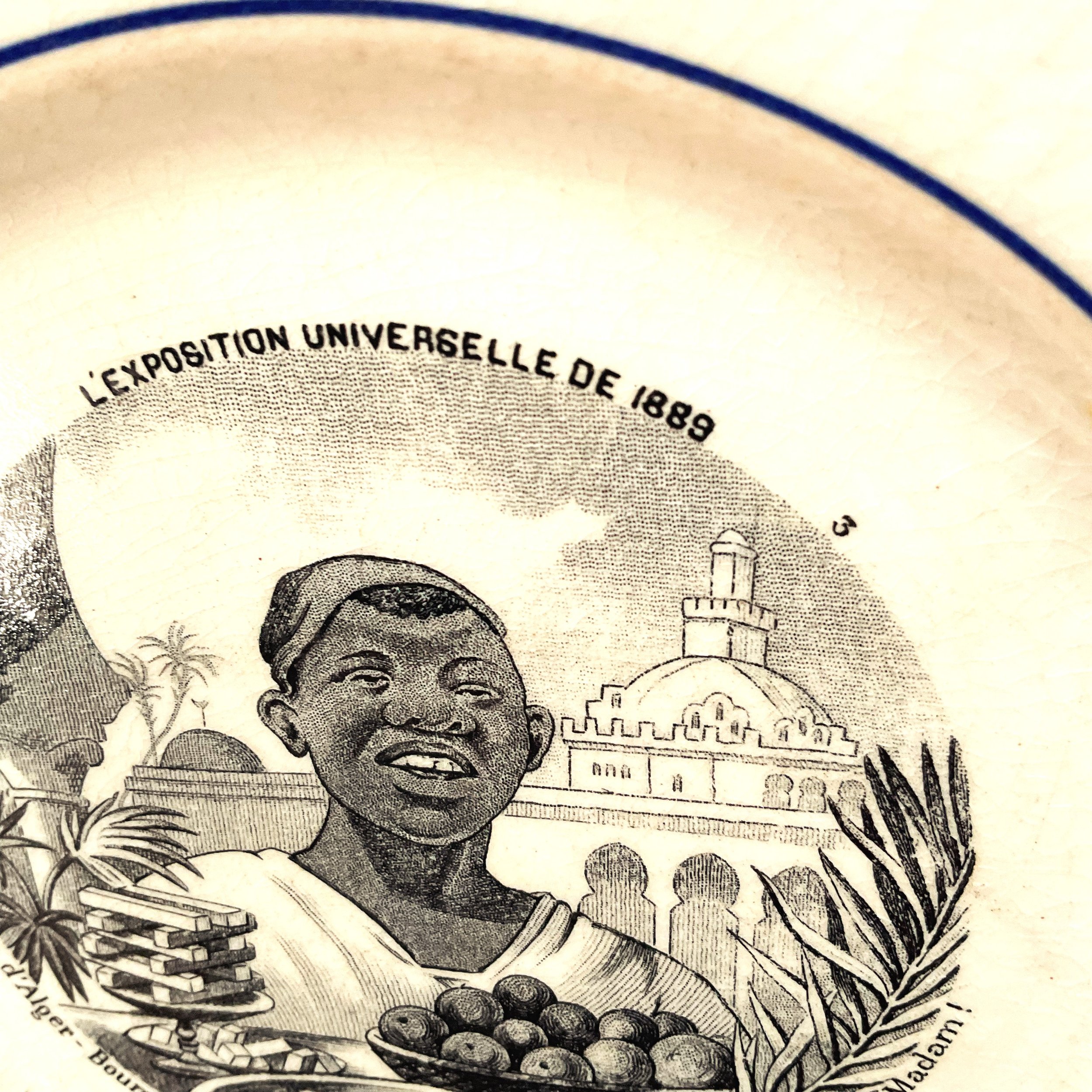 Image 1 of 11
Image 1 of 11

 Image 2 of 11
Image 2 of 11

 Image 3 of 11
Image 3 of 11

 Image 4 of 11
Image 4 of 11

 Image 5 of 11
Image 5 of 11

 Image 6 of 11
Image 6 of 11

 Image 7 of 11
Image 7 of 11

 Image 8 of 11
Image 8 of 11

 Image 9 of 11
Image 9 of 11

 Image 10 of 11
Image 10 of 11

 Image 11 of 11
Image 11 of 11

Lavish Paris Porcelain Tureen And Platter
This large Paris Porcelain tureen and platter is spectacular. Glazed in a most stunning shade of blue, it has been decorated in a hand painted floral design on a black background. Extensive gilding has been used to outline the floral design. Gilding also features on the outer edges and handles. This is a truly magnificent and rare tureen and platter.
Gilding is an age-old technique. It is believed to have originated in Turkey more than 8,000 years ago. The term ‘gilding’ refers to the technique of covering material with a layer of gold. This layer is achieved through the application of gold leaf to an adhesive which has been applied to the surface that is to be gilded. Gilding was extremely expensive but held importance in the age of candlelight where light reflecting off the gilding provided extra lumination onto the dinner table.
The production of porcelain began in France the late 18th century. Revered for its beauty and craftsmanship, kaolin clay is translucent, durable, non-porous and pure white. Kaolin (also known as China clay) is a hydrated aluminium silicate crystalline mineral formed over many millions of years. European efforts to discover the secrets of making hard paste porcelain had lasted for centuries. It was accidently discovered around 1776 at Saint- Yrieix-la-Perche, close to Limoges. A chemist’s wife, who was out foraging for ingredients, thought the white substance would make a good replacement for soap, which could be used to wash and bleach linen.
The tureen and platter stand approximately 31 cms in height. The tureen measures 38 cms in length from handle to handle and approximately 28 cms across. The platter measures 50 cms by 34 cms.
This large Paris Porcelain tureen and platter is spectacular. Glazed in a most stunning shade of blue, it has been decorated in a hand painted floral design on a black background. Extensive gilding has been used to outline the floral design. Gilding also features on the outer edges and handles. This is a truly magnificent and rare tureen and platter.
Gilding is an age-old technique. It is believed to have originated in Turkey more than 8,000 years ago. The term ‘gilding’ refers to the technique of covering material with a layer of gold. This layer is achieved through the application of gold leaf to an adhesive which has been applied to the surface that is to be gilded. Gilding was extremely expensive but held importance in the age of candlelight where light reflecting off the gilding provided extra lumination onto the dinner table.
The production of porcelain began in France the late 18th century. Revered for its beauty and craftsmanship, kaolin clay is translucent, durable, non-porous and pure white. Kaolin (also known as China clay) is a hydrated aluminium silicate crystalline mineral formed over many millions of years. European efforts to discover the secrets of making hard paste porcelain had lasted for centuries. It was accidently discovered around 1776 at Saint- Yrieix-la-Perche, close to Limoges. A chemist’s wife, who was out foraging for ingredients, thought the white substance would make a good replacement for soap, which could be used to wash and bleach linen.
The tureen and platter stand approximately 31 cms in height. The tureen measures 38 cms in length from handle to handle and approximately 28 cms across. The platter measures 50 cms by 34 cms.
This large Paris Porcelain tureen and platter is spectacular. Glazed in a most stunning shade of blue, it has been decorated in a hand painted floral design on a black background. Extensive gilding has been used to outline the floral design. Gilding also features on the outer edges and handles. This is a truly magnificent and rare tureen and platter.
Gilding is an age-old technique. It is believed to have originated in Turkey more than 8,000 years ago. The term ‘gilding’ refers to the technique of covering material with a layer of gold. This layer is achieved through the application of gold leaf to an adhesive which has been applied to the surface that is to be gilded. Gilding was extremely expensive but held importance in the age of candlelight where light reflecting off the gilding provided extra lumination onto the dinner table.
The production of porcelain began in France the late 18th century. Revered for its beauty and craftsmanship, kaolin clay is translucent, durable, non-porous and pure white. Kaolin (also known as China clay) is a hydrated aluminium silicate crystalline mineral formed over many millions of years. European efforts to discover the secrets of making hard paste porcelain had lasted for centuries. It was accidently discovered around 1776 at Saint- Yrieix-la-Perche, close to Limoges. A chemist’s wife, who was out foraging for ingredients, thought the white substance would make a good replacement for soap, which could be used to wash and bleach linen.
The tureen and platter stand approximately 31 cms in height. The tureen measures 38 cms in length from handle to handle and approximately 28 cms across. The platter measures 50 cms by 34 cms.
Not suitable for delivery via Australia Post. Collection by appointment. Please make contact if you would like to arrange another type of delivery. Free delivery to some Melbourne metropolitan areas can be arranged.


























